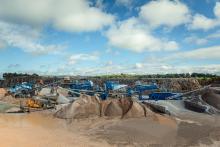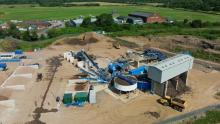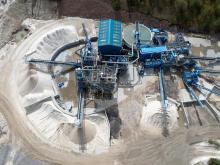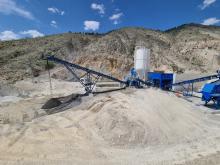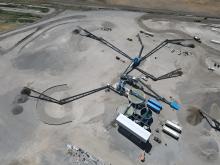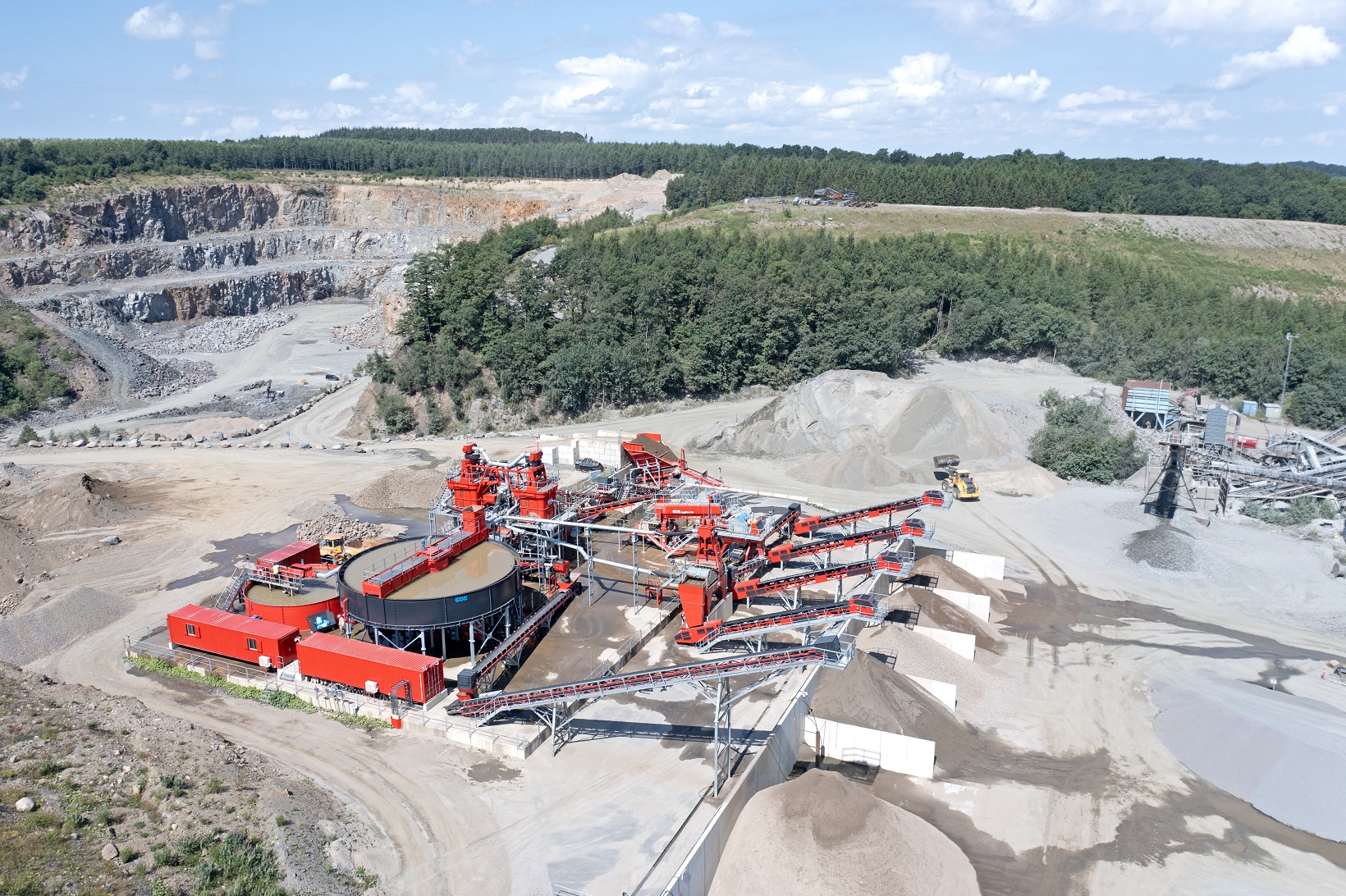
Part of the Peab-group, Swerock is one of Sweden's largest suppliers of materials and services to the construction industry.
The company provides services across the Nordic region including supplying concrete, gravel and rock materials, transport and construction machinery as well as environmental services such as recycling, soil remediation and water treatment.
CDE and Swerock have a longstanding relationship, with CDE having installed Swerock's first project back in 2005 at its Blentarp site.
Commenting on the decision to work with CDE again, Christian Lindgren, Operations Manager for Swerock, said: "Having worked with CDE for many years, we knew that they could deliver a plant to meet our specific requirements. As this plant represents a significant investment, and as one of the first to supply this type of material for concrete production in Sweden, we wanted to make sure it is capable of meeting our needs.
"With our historical relationship, we have a lot of confidence in CDE's process and technology, and we've been glad to partner with the team again," he adds.
One of the greatest concerns that Swerock wished to address was the amount of quarry waste that the firm was producing.
Quarry waste can be a challenge for operators across Scandinavia and wider Europe as it can lead to surplus stockpiles, which can block access to reserves and take up valuable space, as well as being costly to store or dump.
Swerock sought to overcome this challenge by consulting wet processing experts CDE to design and install a plant that could process large amounts of overburden, also known as moraine, a by-product of quarry operations. This is not only to reduce costs and stockpile storage, but also to produce material which can be repurposed into the industry to help reduce waste and maximise resources.
The ability to recycle is particularly important at present with the material shortage in Sweden, so therefore the new investment contributes to both Swerock's sustainability and self-reliance goals.
The investment in technology to respond to this specific problem solidifies Swerock's commitment to producing in-spec concrete to be used in-house in its concrete division. It is also allowing the firm better adapt production to customers' needs.
This new pioneering plant at Swerock's site in Blentarp processes feed material at a rate of 250tph to reduce the organics content in the output.
It comprises of CDE's R4500 primary feeding and scalping screening system, M4500 modular wash plant to pre-screen the material with two integrated counter flow classification units (CFCU) density and sizing classification systems, AggMax scrubbing and classification system, EvoWashTM sand wash system, AquaCycle thickener and organics static screen.
Swerock requires a very specific sand output, 0-2mm, with tight specifications which leaves little room for error as this is an important component in concrete production and replaces the natural gravel. The variable particle size distribution (PSD) of the feed material was a major challenge in ensuring an in-spec 0-2mm fraction output.
This solution has two CFCU density and sizing classification systems to increase the separation surface area and increase organics removal. All the fine sand removed in the CFCUs is captured and dewatered as a fine sand product through the additional EvoWash and stockpiled.
To provide the best opportunity of achieving the gradation required, the CFCUs are used directly after the cyclones. The cyclones perform the primary removal of the -63μm with the overflow from the cyclone going to the AquaCycle. The cyclone underflow passes directly into the CFCUs where a variable rising current of water and a fluidised sand bed impact on the amount of fine sand removed, which is generally up to 0.250mm.
CDE introduced the ability to further remove some of the 0.250mm material after the CFCU which can be either discharged away from the 0-2mm washed sand or proportionally reintroduced to it to nurture the 0-2mm grading according to the requirement.
The CFCU will continue to smooth out the variability of the incoming material to ensure a much more consistent output sand whilst also removing the lightweight organic material.
The use of a unique corrective solution eliminated any concerns around removing too much sand at the bottom end of the sand curve, giving more control over the gradation of the final sand product, and allowing for adjustment to ensure the required specification is met while providing flexibility to produce other specifications if desired.
To deal with the concerns of lignite and organics throughout the feed material, CDE has incorporated an AggMax to the solution. The AggMax has an integrated trash screen which allows for the effective removal of organics and other lightweight contaminants, ensuring the production of the highest quality final aggregates.
Finally, the static screen on the recycled water circuit also suits the overburden feed material as it catches a lot of the lightweight, floatable materials that the cyclones carry to the AquaCycle. Over time these materials can saturate and become suspended in the water which can lead to blocked spray nozzles. The static screen reduces the potential of this happening.
The plant allows Swerock to produce 7 products; the 0-2mm used in concrete production,2 additional sand fractions in 0-0.250mm and 2-4mm, 4 aggregate fractions in 4-16mm, 16-32mm, 32-100mm and +100mm used for a variety of construction and infrastructure projects.
Christian Lindgren says the new plant is allowing them to produce a highly specific, quality sand contributing to self-sufficiency: "We are really focused on becoming more sustainable and reducing our carbon footprint, and it's technology like this that is driving us towards our goals.
"This plant is allowing us to enhance other business divisions internally, so we can focus on our commitment to become more sustainable and offering more durable products of consistent quality to our customers, whilst also allowing us to reduce the amount of quarry waste that we're stockpiling and refine products from surplus material.
"This is an exciting part of our journey, and we look forward to our continued partnership with CDE."
CDE's Head of Business Development for Europe, Eunan Kelly, comments that it's plants like these that are the ones of the future.
"It's been a pleasure to work once again with Swerock. Over the years we've nurtured and developed a fruitful relationship, and we're delighted that they chose to partner with us on this pioneering project. The remit was a challenging one and one that both Swerock and CDE worked long and hard on together. It is always satisfying to see the sand fall off the end of the belt on complex projects like this one.
"Through our long-standing relationship with Swerock, we have continued to act upon the learnings and feedback from previous projects to ensure we were always one step closer to the perfect solution.
"The longitude and evolution of our work with Swerock is a real-life embodiment of our ethos to put our customers first. We're committed to creating a sustainable future for all, and designing and installing a plant like this cements our dedication to building our best world, a ton at a time."
On 9 October at 10:00 CET, CDE will be hosting a virtual tour of the quarry waste recovery plant. Guided by CDE expert Eunan Kelly, the tour will showcase the technology behind each stage of the overburden washing process.
For more information, or to register to attend, please visitcdegroup.com/swerock-webinar

